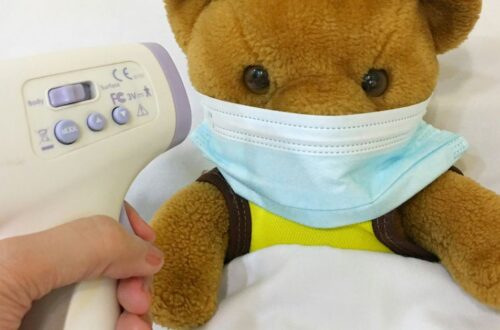The Hidden Role of Community Spaces in Boosting Public Health Awareness
When was the last time you strolled through a local park or community center and noticed how it buzzed with life? Maybe there were children playing, seniors practicing tai chi, or families enjoying a picnic. These gatherings aren’t just signs of a vibrant community; they are crucial components in fostering public health awareness. It struck me that while we often think of hospitals or clinics as the frontline of healthcare, community spaces play a surprisingly pivotal role in shaping health behaviors and attitudes.
The Vital Intersection of Community and Health
Community spaces, in their many forms—parks, recreation centers, libraries—serve as informal hubs for health education and promotion. They are where knowledge meets action, often without the formalities of a doctor’s office. For instance, I recall visiting a local community center where a free health fair was in full swing. Tables filled with pamphlets on nutrition, exercise programs, and mental health resources were surrounded by people eager to learn. The atmosphere was friendly and inviting, a far cry from the sterile environment of a clinic.
The Power of Accessibility
One of the defining features of community spaces is their accessibility. Unlike healthcare facilities, which can be intimidating and often require appointments, community spaces are open and inviting. This accessibility breaks down barriers to health information. Studies suggest that when people have easy access to health resources, they are more likely to engage with them. Just think about it—how many times have you skipped a doctor’s appointment, but not a community event?
Consider the example of a local park that hosts weekly exercise classes. These events not only promote physical activity but also provide an opportunity for social interaction. As people come together to sweat it out, they’re also sharing tips on healthy eating, discussing mental wellness, and even swapping stories of their health journeys. The community becomes a collective support system, one that is often more motivating than a solitary trip to a gym.
Creating Safe Spaces for Dialogue
Community spaces are not just physical locations; they’re emotional havens where conversations about health can thrive. I remember a neighborhood library that set aside time each week for health discussions led by local experts. These sessions were informal, often punctuated by laughter and shared experiences. Such settings foster a sense of belonging and trust. When people feel safe to ask questions and share their struggles, they’re more likely to seek help when they need it.
The Role of Peer Influence
Peer influence is a powerful motivator in health behaviors. In community spaces, individuals are more likely to adopt healthier habits when they see their friends and neighbors doing the same. This social proof can be incredibly persuasive. For example, a study conducted in a Midwestern town found that when individuals participated in group fitness classes at a community center, their likelihood of sticking to a workout routine increased by over 60%. The camaraderie provided by shared goals is hard to replicate in a more isolated environment.
Health Initiatives That Make a Difference
Many community spaces actively engage in health initiatives that further solidify their role in public health awareness. Whether it’s a community garden promoting nutrition or a walking club encouraging physical activity, these initiatives can have a far-reaching impact. Let’s take a closer look at a few notable examples:
1. Community Gardens
Community gardens are popping up in urban areas everywhere, and they are much more than a place to grow tomatoes and cucumbers. They serve as platforms for education on nutrition, sustainability, and self-sufficiency. Participants often learn about the importance of healthy eating while cultivating friendships and community ties. Plus, who doesn’t love fresh produce? I still remember the taste of a sun-ripened tomato from my neighborhood garden—nothing like it!
2. Walking and Running Clubs
These clubs not only promote physical activity but also create a sense of accountability among members. They’re often free or low-cost, making them accessible to a wider audience. As participants lace up their sneakers, they’re not just burning calories; they’re also sharing health tips, discussing local health issues, and motivating each other to stay active. Walking has become my personal therapy—nothing clears my mind quite like a brisk stroll through the neighborhood, especially when I bump into a friend who encourages me to keep going.
3. Health Fairs and Workshops
Health fairs are like a one-stop shop for wellness. They typically feature screenings, educational workshops, and resources on various health topics. Local healthcare providers often collaborate to ensure attendees receive comprehensive information. I once attended a health fair that included everything from blood pressure checks to cooking demonstrations. The best part? There was a booth dedicated to mental health resources, breaking the stigma surrounding that essential aspect of well-being.
Addressing Health Disparities
Community spaces play a crucial role in addressing health disparities, particularly in underserved populations. They can be tailored to meet the specific needs of diverse communities, offering culturally relevant resources and support. This is particularly important in areas where access to healthcare is limited. For example, some community centers have implemented programs that focus on chronic disease management, providing education and support to those who might not receive it otherwise.
Tailored Approaches
Take a moment to think about the unique challenges faced by marginalized communities. Language barriers, lack of transportation, and economic constraints can all hinder access to healthcare. Community spaces can bridge these gaps by offering services in multiple languages, providing transportation assistance, and creating programs that are affordable or free. It’s about meeting people where they are—literally and figuratively.
The Unexpected Benefits of Connection
While the primary focus of community spaces often revolves around physical health, the benefits extend far beyond the body. Social connections formed in these environments can lead to improved mental health outcomes. I’ve often found that when I engage in community activities, I feel a sense of belonging—a critical aspect of mental well-being.
Combatting Isolation
Isolation is a growing concern, especially among older adults. Community spaces provide opportunities for social interaction, which can combat feelings of loneliness. Programs that encourage intergenerational activities—like art classes or storytelling events—can help weave stronger social fabrics within communities. I remember my grandmother participating in a local art project with kids from the neighborhood. The joy on her face was priceless—and it reminded me how crucial these connections are at every stage of life.
Innovative Partnerships for Greater Impact
Innovative partnerships between community organizations, healthcare providers, and local governments can amplify the impact of community spaces on public health. When different sectors come together, the potential for outreach and engagement expands exponentially. Collaborative efforts can lead to the creation of programs that address not just individual health issues but community-wide challenges.
Examples of Successful Collaborations
In many cities, you’ll find examples of successful collaborations that have transformed community health. For instance, a partnership between a local school and a health department might lead to a nutrition education program that’s implemented in both the classroom and community center. Such initiatives create a holistic approach to health, ensuring that education is consistent and far-reaching.
Challenges and Opportunities Ahead
Despite the promising potential of community spaces in promoting health awareness, challenges persist. Funding can be sporadic, and there’s often a lack of awareness about the available resources. This is where advocacy comes in. Raising awareness about the importance of community spaces and securing consistent funding can help sustain their efforts. It’s a tough battle, but one that is essential for the well-being of our communities.
Engaging the Community
Engaging community members in the decision-making process is crucial. When people feel invested in their community spaces, they’re more likely to participate and promote health initiatives. Town hall meetings, surveys, and feedback sessions can help ensure that programs meet the needs of the community. I’ve seen firsthand how a little community input can lead to big changes—like the time a local park redesigned its playground based on feedback from children and parents.
Conclusion: The Future of Community Health
As we look towards the future, the role of community spaces in boosting public health awareness is more important than ever. They can serve as the backbone of health promotion, bridging gaps in access and fostering connections. These spaces can empower individuals to take charge of their health while also cultivating a sense of community. The next time you find yourself in a park or community center, take a moment to appreciate its potential. You never know—the simple act of gathering might just be the key to a healthier, more informed society.
So, the next time someone asks if community spaces really matter, you can confidently say, “Absolutely!” They’re not just parks or gyms; they’re the heartbeat of public health awareness. And who knows? You might just find your next health tip or workout buddy waiting for you there.






